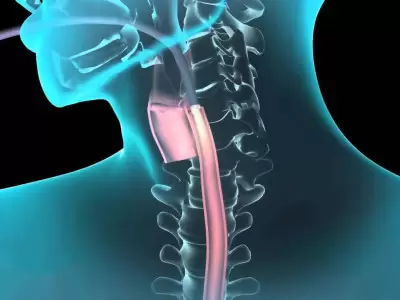Salivary Gland Stones
Calcium deposits in the salivary gland tissues or the secretion ducts are called salivary gland stone or sialolith; and stone formation in the salivary glands are referred to as sialolithiasis.
Salivary gland stones are the most common diseases of the salivary glands. They are benign diseases observed in society with an incidence rate of 1%. Salivary gland stones observed generally in adults of middle to advanced age—with a higher incidence rate in men than women—rarely develop in children. Stones are usually observed as a single stone in a single salivary gland; however, more than one stone can develop in more than one salivary gland, as well.
Salivary gland stones are observed to exist in the submandibular (below the lower jaw) salivary glands with an incidence rate of 80-90%, in the parotid (in front of the ear) salivary gland with an incidence rate of 10-15% and rarely in the sublingual and minor salivary glands. Stones developing in the submandibular salivary glands are usually larger and located in the salivary duct; whereas more than one stones develop in front of the ear (parotid) with smaller diameters, often in the salivary gland tissue.
More stones develop in the submandibular salivary gland because of structural properties such as that the duct (Wharton duct) of the glans is longer than that of other glands, the duct is angular in more than one region, the duct's opening (punctum) to the floor of mouth is narrow, the secretion from the gland is in the opposite direction of the gravity and also because of the facts that the secretion of this gland contains more calcium and has a low acidity value.
The formation of stones depends of various factors; but in general, the formation of stones is believed to be caused by the deposition of calcium and phosphate that increases with the effect of infection and dead cells accumulation in the salivary gland ducts.
Certain conditions increase the risk of stone formation, such as inadequate fluid intake, excessive dehydration, eating disorders, etc. and certain drugs that cause the saliva to decrease or become more viscous.
Stones that initially form in microscopic dimensions and cause blockage in small ducts grow an average of 1 mm per year, as a result of the accumulation of cell residues and minerals and reach sizes that cause complaints by blocking major salivary ducts over time.
The most important complaint of patients with stones in their salivary glands is painful swelling that develops under the chin or in front of and below the ear, especially during eating.
In cases where stone formation is accompanied by inflammation, some other symptoms are also observed, such as skin rash and fever in the area of swelling, enlargement of the neighboring lymph nodes and purulent discharge from the areas where the openings of the salivary ducts to the mouth exist.






Comment
Your Contact Information will not be shared in any way. * Required Fields